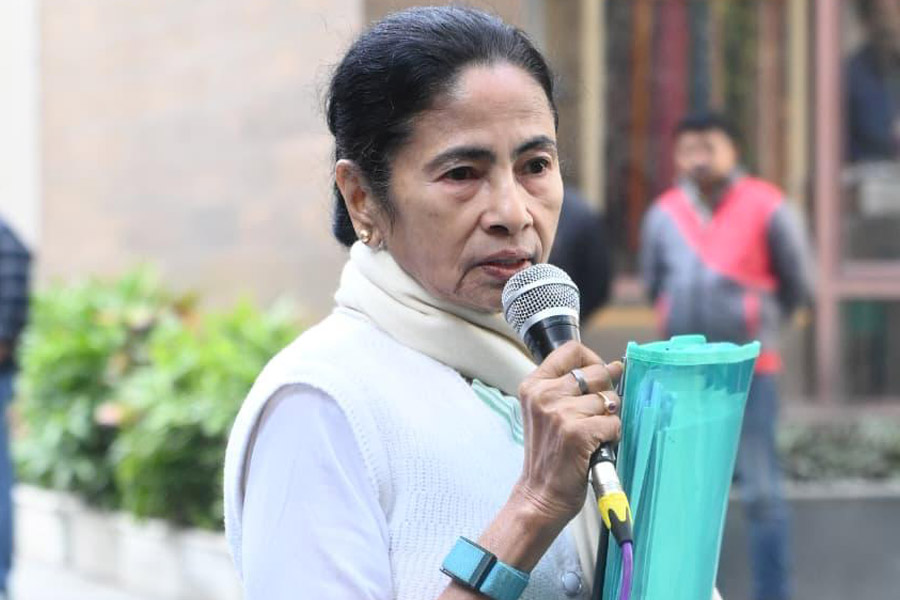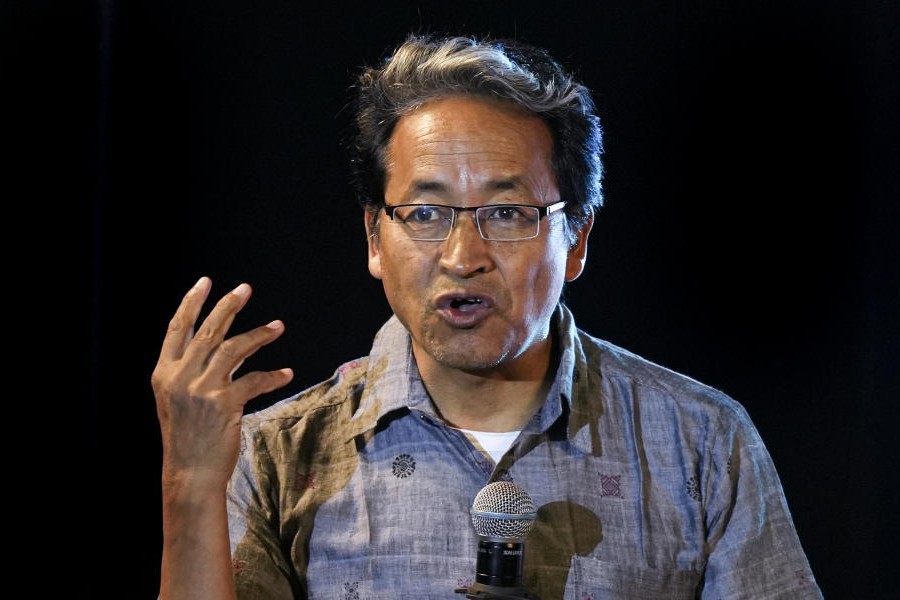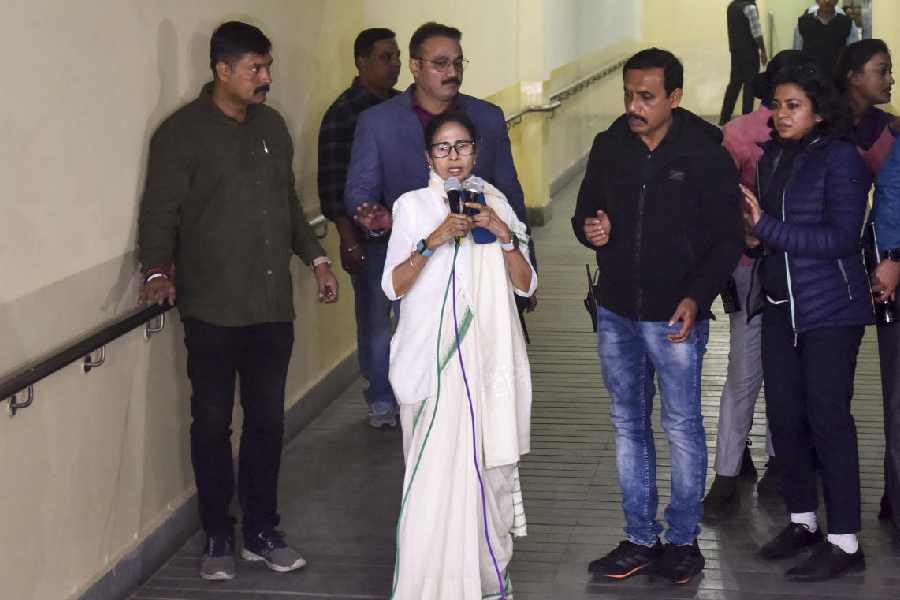 |
| A PTI file picture of Tejas at Bangalore airport |
Bangalore, Sept. 29: India?s home-grown Light Combat Aircraft is years away from fighting fit. A flop show in Moscow has belied hopes that the money-guzzling fighter, christened Tejas, will join the air force within the next three years.
The LCA, a joint effort by the Defence Research and Development Organisation (DRDO) and the public sector Hindustan Aeronautics Limited (Hal), is meant to replace the ageing MiG-21s as frontline air defence fighters.
The latest setback came when the Kaveri engine, designed by the Gas Turbine Research Establishment in Bangalore to power the fighter jet, flopped during ground tests at the State Institute for Aerodynamics Research, Moscow.
The engine collapsed when high-altitude conditions were simulated at the research facility. The next round of tests onboard a Tupolev-16 (TU-16) bomber at the Gromov Flight Research Institute, Moscow, was called off as a result, DRDO sources said.
They added that the glitch would hold up the project further, delaying the fighter jet?s induction by the Indian Air Force in 2007-08.
Last month, DRDO chief V.K. Atre said on the day of his retirement that the authorities may have overestimated their capability to deliver the LCA.
?The schedule of flight tests (in Russia) for the engine was to end in mid-2005, followed by several hundred hours of flying onboard two aircraft in India prior to certification. Even if these tests start in 2007 (on Indian aircraft), the earliest certification will be in 2010. We want to be doubly cautious about the engine because the LCA is a single-engine aircraft,? a source said.
Each indigenous LCA will cost $17-20 million against the $35 million price tag of Su-30 fighters.
The IAF has been insisting on fitting the LCA with an indigenous engine rather than the F-404 engines of the US company General Electric. The GE engines were acquired for Technology Demonstrators and prototypes under a $100- million contract.
The contract permits the import of 17 engines with an option for increasing the number to 35 over a five-year period.
Three of these engines now power two Technology Demonstrators and a prototype and have logged more than 150 hours in flight tests. The first Demonstrator took to the skies on its maiden sortie on January 4, 2001.
The LCA project has slipped up on weaponisation as well.
The multi-mode radar being developed by the Electronics and Radar Development Establishment and Hal has been plagued by technical snags and cost overruns.
The radar is a key component of the fighter?s weapon system, taking care of detection and tracking (of targets) and delivery of weapons. Its track-while-scan facilitates simultaneous tracking and engagement of 10 targets.
Besides this, the air-to-air ?Astra? missile of the beyond visual range (BVR) class with an 80-km range, which is being developed by the DRDO for the LCA, has only reached the stage of test-firing motors on the ground.
?It?s a big task to complete the design of this missile and carry out sufficient number of tests by 2008,? sources said.
The option of importing similar weapons will cause cost overruns and belie the claim that the indigenous fighter is an inexpensive replacement for MiGs.
The LCA project was launched in the early 1990s with the Aeronautical Development Agency, Bangalore, as the nodal agency.
During the Rs 5,500-crore development phase, seven aircraft (two Technology Demonstrators, four prototypes and one two-seater trainer version) will be manufactured to log 2,500 hours of test-flying ahead of induction by the IAF.
Once the tests are completed, Hal will start largescale manufacture of the fighter jets.











